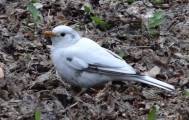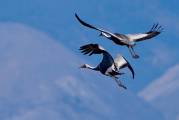Мастера на PROFI.RU:
| Ремонт квартир |
| Уборка квартир |
| Мастера по маникюру |
Black-eared Wheatear | Oenanthe hispanica melanoleuca 'aurita'
2024-05-26. Gennadiy Dyakin: Common Kestrel, Short-toed Snake-Eagle.
2024-05-25. Andrey Kovalenko: European Nightjar, Gennadiy Dyakin: Lesser Grey Shrike, European Bee-eater, Ildar Khalitov: Little Bittern, Black-crowned Night Heron, Great Reed Warbler, Nikita Kanunnikov: Common Swift, Common Moorhen, Mallard, Great Cormorant, Great Reed Warbler, Vadim Nagumanov: Common Whitethroat, Ortolan Bunting, Wood Sandpiper, Viktor Kolesnikov: Eurasian Hobby, Common Whitethroat, Vladimir Muravskiy: Common Rosefinch, Yuriy Malkov: White Wagtail.
2024-05-24. Aibar Magazov: European Greenfinch, Eurasian Goldfinch, Eurasian Linnet, Blyth's Reed Warbler, Red-backed Shrike, Andrey Shatalov: Black Woodpecker, Elmira Mustafa: Spotted Flycatcher, Eurasian Roller, Gani Nazarbek: Red-necked Phalarope, Gennadiy Dyakin: Northern House Martin, Mongolian Finch, Rock Sparrow, Little Owl, Pied Wheatear, Rufous-tailed Rock Thrush, Long-tailed Shrike, Turkestan Shrike, Chukar Partridge, Ildar Khalitov: Glossy Ibis, Great Reed Warbler, Eurasian Roller, Isabelline Wheatear, Northern Lapwing, Eurasian Whimbrel, Gadwall, Little Stint, Temminck's Stint, Common Redshank, Garganey, Oriental Turtle Dove, Long-legged Buzzard, Common Cuckoo, Yelbossyn Babalyk: Long-legged Buzzard, Little Bustard, Rosy Starling, Grey Wagtail, Mew Gull, Marbled Duck, Common Shelduck, Red-crested Pochard, Ferruginous Duck, Mallard, Common Kestrel, Rock Pigeon, Mute Swan, Common Oystercatcher, Black-tailed Godwit, Common Greenshank, Dalmatian Pelican, Wood Pigeon, Eurasian Whimbrel, Yuriy Malkov: White-winged Tern, White-winged Tern, Mute Swan, Wood Sandpiper, Common Sandpiper, Dunlin, Ruff, Ruff, Ruff, Temminck's Stint, Little Stint, Greater Ringed Plover.
2024-05-23. Andrey Shatalov: European Golden Oriole, Booted Warbler, Common Cuckoo, Long-eared Owl, Common Sparrowhawk, Common Sparrowhawk, European Golden Oriole, Blyth's Reed Warbler, Anna Yasko: Blyth's Reed Warbler, Gennadiy Dyakin: White-capped Bunting, Golden Eagle, Lesser Kestrel, Blue Rock Thrush, Crested Honey-Buzzard, Qanatbek Kenzhegulov: Hoopoe, Lesser Grey Shrike, Kentish Plover, Kentish Plover, Lesser Grey Shrike, Vladimir Muravskiy: Greenish Warbler.
2024-05-22. Aibar Magazov: Common Whitethroat, Eurasian Goldfinch, Andrey Kovalenko: Common Starling, Andrey Shatalov: Common Sparrowhawk, Common Chiffchaff, Eurasian Hobby, Galina Rosenberg: Fieldfare, European Golden Oriole, Carrion Crow, Common Whitethroat, Common Rosefinch, Siberian Stonechat, Gadwall, Gennadiy Dyakin: Steppe Grey Shrike, Temminck's Stint, Little Ringed Plover, Common Pheasant, Ildar Khalitov: Syke's Warbler, Qanatbek Kenzhegulov: Eurasian Redstart, Terek Sandpiper, Greater Flamingo, Western Marsh-Harrier, Black-headed Wagtail, Grey Heron, Willow Warbler, Common Redshank, Pied Avocet, Curlew Sandpiper, Common Redshank, Dunlin, Northern Wheatear, Lesser Short-toed Lark, Robert Parker: Crested Lark, Rock Sparrow, Rosy Starling, Northern House Martin, Red-headed Bunting, Viktor Kolesnikov: Eurasian Hobby, Viktoriya Zvyaginceva: Common Kestrel, Great White Pelican, Dalmatian Pelican, Eurasian Wigeon, Northern Pintail, Calandra Lark, Black-Necked Grebe, Bluethroat, White Wagtail, Masked Wagtail, Chukar Partridge, Pied Wheatear, Isabelline Shrike, Black-Necked Grebe, White-headed Duck, Common Chiffchaff, Azure Tit, Western Marsh-Harrier, Pied Wheatear, Yelbossyn Babalyk: Oriental Turtle Dove, Common Sparrowhawk, Corn Bunting, Lesser Kestrel, Rufous-tailed Rock Thrush, Common Chiffchaff, Lesser Whitethroat, Siberian Stonechat, Yuriy Malkov: Grey Wagtail.
2024-05-21. Alexandr Belyaev: White-headed Duck, Little Bittern, Great White Pelican, Great White Pelican, Eurasian Whimbrel, Eurasian Curlew, Dalmatian Pelican, Common Greenshank, Spotted Redshank, Temminck's Stint, Little Stint, Black-crowned Night Heron, Black-winged Stilt, Terek Sandpiper, Gull-billed Tern, White-winged Tern, Lesser Sand Plover, Ruddy Turnstone, Black-crowned Night Heron, Blyth's Reed Warbler, Andrey Shatalov: Bluethroat, Willow Warbler, Great Reed Warbler, European Golden Oriole, Blyth's Reed Warbler, Greenish Warbler, Gadwall, Little Bustard, Bakhytzhan Suindykov: Common Cuckoo, Galina Rosenberg: Northern Lapwing, Common Pochard, Hybrid Wagtail, Isabelline Wheatear, Northern Wheatear, Ruddy Shelduck, Citrine Wagtail, Red-backed Shrike, Red-backed Shrike, Gani Nazarbek: Macqueen's Bustard, Spotted Flycatcher, Bluethroat, Grey-necked Bunting, Greenish Warbler, European Nightjar, Eurasian Stone Curlew, Gennadiy Dyakin: Syke's Warbler, Eurasian Roller, Turkestan Shrike, Nurum Sagaliyev: Booted Warbler, Eastern Imperial Eagle, Lesser Whitethroat, Great White Egret, Spotted Flycatcher, Mallard, Whooper Swan, Black Kite, Caspian Gull, Booted Warbler, Fieldfare, Booted Warbler, Bluethroat, Sand Martin, Ruff, Wood Sandpiper, Black-tailed Godwit, Spotted Redshank, Common Coot, Eurasian Redstart, Spotted Flycatcher, Wood Warbler, Booted Warbler, Oriental Turtle Dove, Lesser Whitethroat, Eastern Imperial Eagle, Mallard, Qanatbek Kenzhegulov: Wood Warbler, Robert Parker: Upland Buzzard, Lesser Grey Shrike, Syke's Warbler, Blyth's Reed Warbler, Spanish Sparrow, Spanish Sparrow, Indian Sparrow, Black-Bellied Sandgrouse, Temminck's Stint, Citrine Wagtail, Serg Silan: Common Whitethroat, Vadim Nagumanov: Sky Lark, Steppe Buzzard, Vladimir Muravskiy: Common Snipe, Vladislav Lunyov: Whooper Swan.
2024-05-20. Galina Rosenberg: Sand Martin.
2024-05-26. 03460420102 (White Wagtail)
Юрий Малков: Спасибо Анна.
2024-05-25. 03460420101 (White Wagtail)
Анна Ясько: Удалено.
2024-05-25. 07080065001 (Marbled Duck)
Анна Ясько: Серая утка.
2024-05-25. 07080064901 (Mew Gull)
Анна Ясько: Хохотунья. Крупный клюв, красное пятно на подклювье.
2024-05-25. 06980116704 (Black Woodpecker)
Андрей Шаталов: Спасибо!
2024-05-25. 07340099701 (Booted Warbler)
Нурум Сагалиев: Рақмет
2024-05-24. 03460420101 (White Wagtail)
Юрий Малков: Удалите пожалуйста лишнее.
2024-05-24. 06980116701 (Black Woodpecker)
Канатбек Кенжегулов: Поздравляю!
2024-05-24. 06980116703 (Black Woodpecker)
Юрий Малков: Поздравляю Андрей!Снимки отличные!
2024-05-24. 06980116701 (Black Woodpecker)
Вадим Нагуманов: Мои поздравления!
2024-05-24. 03460418701 (White-winged Tern)
Юрий Малков: Удалите пожалуйста.
2024-05-24. 06980116704 (Black Woodpecker)
Анна Ясько: Мои поздравления! Юбилейный!
2024-05-24. 06980116701 (Black Woodpecker)
Андрей Шаталов: 150-й, и какой!
2024-05-24. 07080063901 (Lesser Kestrel)
Анна Ясько: У самцов обыкновенной и степной пустельг голова серая, только у степной серого больше, темный ус почти сливается с серой каской . Здесь же [....]
2024-05-24. 07080063901 (Lesser Kestrel)
Елбосын Бабалык: У меня есть и другие фото. Там отчетливо видна голубая голова.
2024
2. Kudaibergen Amirekul (161)
3. Fedor Shakula (159)
4. Vladimir Muravskiy (157)
5. Zhaskairat Ermek (151)
6. Gennadiy Dyakin (149)
7. Qanatbek Kenzhegulov (133)
8. Ildar Khalitov (130)
9. Nurum Sagaliyev (112)
10. Robert Parker (111)
Naumann's Thrush (Turdus naumanni)
© Alexey Timoshenko
2024-04-02
kostanay reg.
Snowy Owl (Nyctea scandiaca)
© Muhammed-Rahim Boranbaev
2024-03-04
Tasorpa, Kyzylsay natural park, Mangystau
Bearded Tit (Panurus biarmicus)
© Galina Rosenberg
2019-11-22
g.Altai.Vostochno-Kazachstanskaia oblast
White-winged Snowfinch (Montifringilla nivalis)
© Serg Silan
2024-02-28
Kazakhstan






















